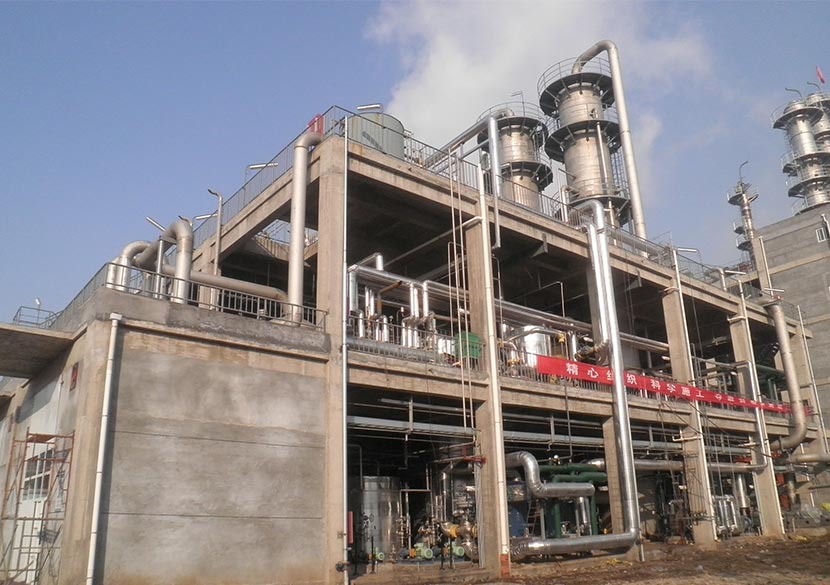Ensuring Safety at Formaldehyde Plants: A Comprehensive Guide
Safety measures at formaldehyde plants are paramount to protect both workers and the surrounding environment from potential hazards. In this guide, we will delve into the various safety protocols, procedures, and technologies employed in formaldehyde plants to ensure a safe working environment and prevent accidents.

Understanding Formaldehyde Production
Formaldehyde, a vital chemical used in various industries, including manufacturing, healthcare, and agriculture, is produced through the controlled oxidation of methanol. This process involves several intricate steps and requires meticulous attention to safety.
Chemical Reaction Process
The production of formaldehyde involves the catalytic oxidation of methanol vapor in the presence of air. This reaction occurs at high temperatures and pressures, necessitating rigorous safety measures to prevent accidents and chemical releases.
Raw Material Handling
Proper handling of raw materials, including methanol and catalysts, is crucial to minimize the risk of spills, leaks, and exposure. Stringent protocols govern the storage, transportation, and transfer of these materials within the plant premises.
Safety Measures in Plant Design and Layout
The layout and design of Formaldehyde Manufacturing Process plants play a significant role in ensuring safety and efficiency. Various engineering controls and safeguards are incorporated into the plant design to mitigate risks and enhance operational safety.
Ventilation Systems
Effective ventilation systems are essential to control airborne concentrations of formaldehyde and other volatile organic compounds (VOCs) within the plant premises. Dilution ventilation and local exhaust systems help maintain safe air quality levels for workers.
Emergency Response Preparedness
Formaldehyde plants are equipped with comprehensive emergency response plans to address potential accidents, spills, or releases promptly. These plans include measures for evacuating personnel, containing spills, and notifying relevant authorities.
Personal Protective Equipment (PPE)
Personal protective equipment forms a vital line of defense for workers in formaldehyde plants, helping to minimize exposure to hazardous chemicals and mitigate potential health risks.
Respiratory Protection
Workers in formaldehyde plants are provided with respirators, such as N95 masks or powered air-purifying respirators (PAPRs), to protect against inhalation of formaldehyde vapors and other airborne contaminants.
Chemical-Resistant Clothing
Chemical-resistant clothing, including gloves, aprons, and coveralls, is essential to prevent direct skin contact with formaldehyde and other chemicals used in the production process.
Process Monitoring and Control
Continuous monitoring and control of process parameters are essential to maintain safe operating conditions and prevent deviations that could lead to accidents or product quality issues.
Automated Systems
Formaldehyde Production Plant utilize advanced process control systems equipped with sensors, alarms, and automated shutdown mechanisms to detect abnormalities and initiate corrective actions in real time.
Routine Inspections and Maintenance
Regular inspections and preventive maintenance of equipment, piping, and instrumentation are conducted to identify potential hazards, defects, or malfunctioning components that could compromise safety.
Employee Training and Safety Awareness
Ensuring the competency and awareness of personnel is crucial for maintaining a safe working environment in formaldehyde plants. Comprehensive training programs are provided to equip employees with the knowledge and skills necessary to identify hazards, follow safety protocols, and respond effectively to emergencies.
Safety Training Programs
Employees undergo regular safety training sessions covering topics such as chemical handling, emergency response procedures, and the proper use of personal protective equipment.
Safety Culture Promotion
Fostering a culture of safety is integral to the success of safety initiatives in formaldehyde plants. Management promotes open communication, encourages reporting of safety concerns, and recognizes employees for their contributions to maintaining a safe workplace.
Environmental Protection Measures
In addition to safeguarding human health and safety, formaldehyde plants also implement measures to minimize their environmental footprint and comply with regulatory requirements.
Waste Management Practices
Efficient waste management practices, including recycling, treatment, and disposal of hazardous waste streams, help minimize environmental pollution and ensure compliance with environmental regulations.
Emission Control Technologies
Advanced emission control technologies, such as catalytic converters and scrubbers, are employed to reduce air emissions of formaldehyde and other pollutants from plant operations.
Conclusion
Safety measures at formaldehyde plants encompass a comprehensive range of protocols, technologies, and best practices aimed at protecting workers, the environment, and surrounding communities. By prioritizing safety in plant design, operation, and employee training, formaldehyde producers can mitigate risks and ensure sustainable, responsible production practices.
评论
发表评论